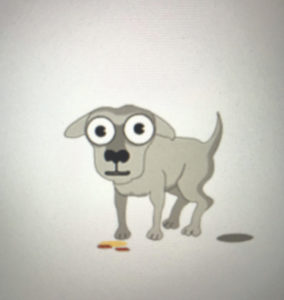Halloween is a terrifying time of year when you treat animals who struggle with portion control. Maybe not as nerve-wracking as Thanksgiving, but still anxiety-inducing. We hold our breath waiting for that first phone call asking, “How bad is it if my [type of pet] ate [amount] of [type of candy]?”
Best case scenario: a German shepherd eats a Tootsie Roll that fell on the ground. More likely scenario: a Jack Russell terrier has managed, probably with the help of the cat that jumped on the counter and knocked it off, to ingest a really nice box of dark chocolate candies, or maybe a fancy chocolate brownie with all sort of delicious nuts and fruits, or a third-grader’s entire two bags of mixed chocolates. (The trifecta, of course, is eating a THC-infused chocolate brownie with macadamia nuts — but we will save that for another column.)
Chocolate toxicity is one of the most common that we see, especially after bags of it are collected on Halloween and left out on countertops. The direct toxicity is caused by caffeine and theobromine, both of which are methylxanthines found in varying amounts in chocolate, dependent on the type (baker’s chocolate has the most, white chocolate the least). They are absorbed through the intestinal system and stimulate the central nervous system, causing the heart rate to become rapid, the heart muscle to contract harder, and gastric secretions to increase. This is because they stimulate our “fight or flight” hormones, or catecholamines.
 FoodSo, if we were running to save ourselves from a giant bag of snacks, chocolates might help. Sadly, we are just trying to digest them.
FoodSo, if we were running to save ourselves from a giant bag of snacks, chocolates might help. Sadly, we are just trying to digest them.
There does appear to be variable susceptibility to these compounds: some dogs get less sick, and others, more sick. It is very important to know as best you can the type and amount of chocolate ingested. The A.S.P.C.A. poison control hotline (888-426-4435) is invaluable at such times. Staffed 24/7 by experts, it can help avoid hospitalization and help vets make the best prognosis and treatment plan. They have seen and treated it all.
In the clinic, we use a special calculator. When we enter the weight of the animal, the type of chocolate, and the amount ingested, a tiny cartoon dog enacts the symptoms to be expected. The only one we like to see is the cartoon dog vomiting and then having cartoon diarrhea.
Unfortunately, the cartoon dog (and real-life dogs) can, rarely, develop a life-threatening abnormal heart rate and rhythm. The classic signs are diarrhea, vomiting, hyperactivity, tremors, and seizures. The treatment involves trying to get as much chocolate out as possible by inducing vomiting.
An important job of the veterinary technician is to monitor the dog after we induce vomiting, to make sure he does not try to eat the chocolate we just had him barf up. Depending on how successful that is, hospitalization and supportive care can be required. It can take up to four days for theobromine to leave a dog’s system.
Then there’s xylitol, which is a great sugar substitute if you are a human but is toxic to dogs. Most commonly found in gum, some peanut butters, and “sugar-free” candy, xylitol can cause serious problems even in small amounts. When ingested, it tricks the pancreas into releasing insulin, thinking there is a lot of glucose in the body. For some reason, it triggers the release of three to seven times the amount of insulin than it would with normal sugar.
This causes a life-threatening low blood sugar level. Symptoms including vomiting, tremors, weakness, and seizures can start within 30 minutes to 12 hours after ingestion. Small dogs are at highest risk because of their size and the amount of xylitol in products. (Cats do not appear to be susceptible to xylitol.) In addition to low blood sugar, it can also cause severe necrosis of the liver, which carries a poor prognosis.
So, this Halloween, whether you are buying candy to hand out or to eat yourself the day after, please keep it in the freezer (highly recommended) or in a padlocked cabinet. As much as we enjoy watching the cartoon dog poop, we don’t want to be punching in numbers for your beloved pet.
Sadie Hutchings, D.V.M., practices at the Herring Cove Animal Hospital in Provincetown.



